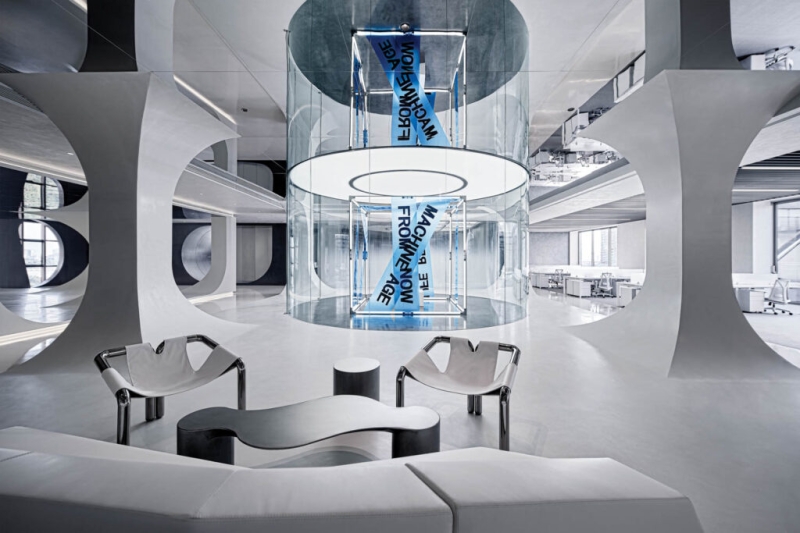The leather and stainless chairs by the gallery are also custom.
No doubt, 2025 has heralded in an era of rapid change. Given that design entwines with every aspect of our lives, that means the design landscape is shifting too. Celebrating its 50th anniversary, the American Society of Interior Designers recently presented its annual Trends Outlook. As ASID’s president and CEO Khoi Vo remarks: “The report underscores the transformative power of design in addressing society’s shifting priorities.” The result, unveiled partnership with Sherwin-Williams and the Dallas Market Center, follows a year of research. Two more ASID Outlook reports, The Economic Outlook and the State of Interior Design, are slated to drop later in the year. For now, have a look at takeaways from the current version.
ASID’s 2025 Trend Report Reflects A Changing Design Landscape
Shifting Demographics
Generational shifts are pronounced, touching upon every category of the interior design profession. Folks are living longer and working longer. The number of centenarians is increasing, which can put stress on healthcare and the economy. In broad characteristic strokes, Gen X is seeking more transparency (particularly in the workplace); millennials feel financial pressure as they enter middle age; Gen Z is acknowledging mental health challenges while facing economic hurdles. The younger Alpha and Beta generations bring an increasing embrace of technology.
Learn what Gen Z has to say about hybrid work and burnout, and take in research-based industry insights, by following ThinkLab’s Design Nerds Anonymous on the SURROUND Podcast Network.
Economic Indications
Economists do predict growth for 2025, yet it will be slow and steady with the number put at 2.5 percent for the GDP with the wealthiest population expected to benefit the most. These projections, thus, highlight the population’s disparity and wealth goes hand in hand with geographic distribution with coastal areas drawing those with deeper pockets. But a rise in discretionary income leads to more travel and leisure activities providing designers opportunities to create highly sought experiential venues where art, culture, and commerce converge like this Adobe installation designed by Gensler.
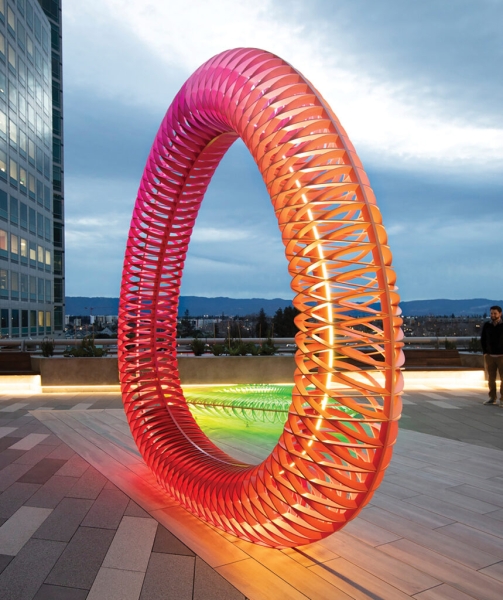
Creativity Blooms, a multipart installation by Hou de Sousa at the expanded San Jose, California, head quarters of Adobe, starts at street level, where a custom logo and eight LED strip–lit “roots” run up and underneath the footbridge that adjoins an office tower, both newly built for the software company by Gensler.
Housing is Challenging
No doubt, home ownership is tough. High interest rates, home prices, plus costs of building materials and labor are factors. Older folks own the greater number of homes; similarly, boomers own the most second homes, with Florida having the highest concentration. Given the challenges, rising paradigms are cohabitation and multi-generational housing. More families renovate rather than build anew, such as an updated 1930s home in Westchester, New York. These are among the considerations presenting an array of opportunities for designers, ever the problem solvers.
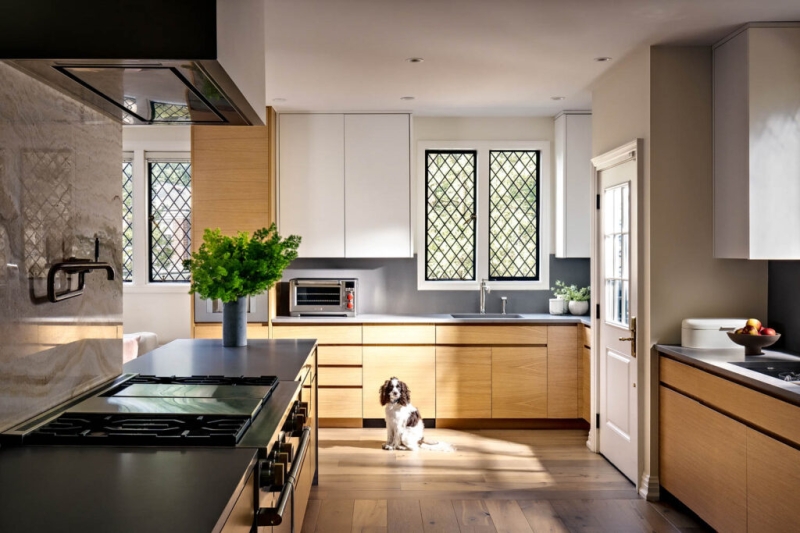
In the refreshed 1930s Brittany-style chateau, windows were fitted with custom leaded glass. Photography by Alexander Severin Architectural Photography.
Residential Meets Dopamine Design
What’s dopamine design? Design that brings joy. Bold colors, spirited shapes, vintage and artisanal pieces, and expressing a cultural narrative describe a playbook, not only for its aesthetic value but with potential impact on well-being and mental health. It’s designers who create spaces to nourish mind, body, and soul such as this mountain chalet in Montana by O’Neill Rose Architects.
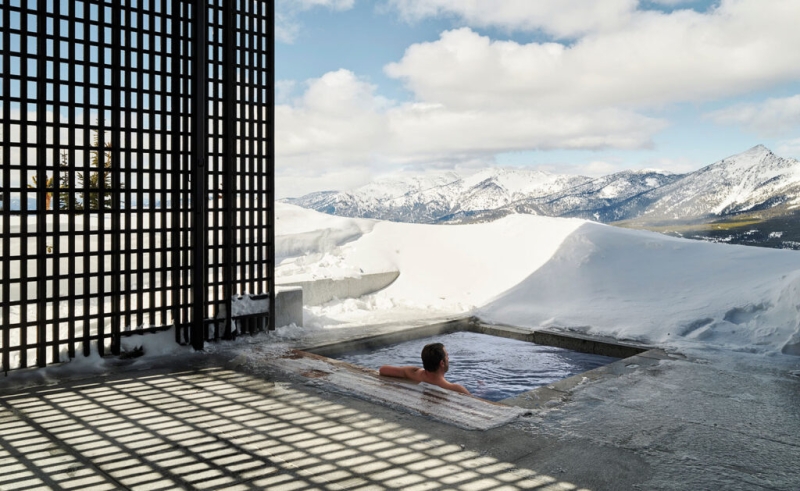
A hot tub terrace offers sweeping views in this mountain chalet. Photography by Matthew Millman.
A Multigenerational Workplace
Now, the working population encompasses a widening range of ages from those entering the workforce to employees opting to remain at their jobs longer. The designer’s chief challenge, therefore, is to support all. Designers are also still confronting the post-Covid balance between remote and in-person work. For those showing up full time, spaces have to make the commute worth it and provide an antidote to loneliness. For hybrid staff, time on site must be made seamless and easy. Flexibility and dual-purpose spaces are vital, such as the communal areas in the new Neiman Marcus headquarters in Dallas. Findings show Gen X favoring face-to-face involvement. Gen Z, questioning traditional scenarios, seeks less hierarchical and more transparent organizations with different leadership styles such as collaborative or rotating models. Adaptive re-use, including mall re-development and collaboration with local investors, are also workplace and therefore designer considerations.
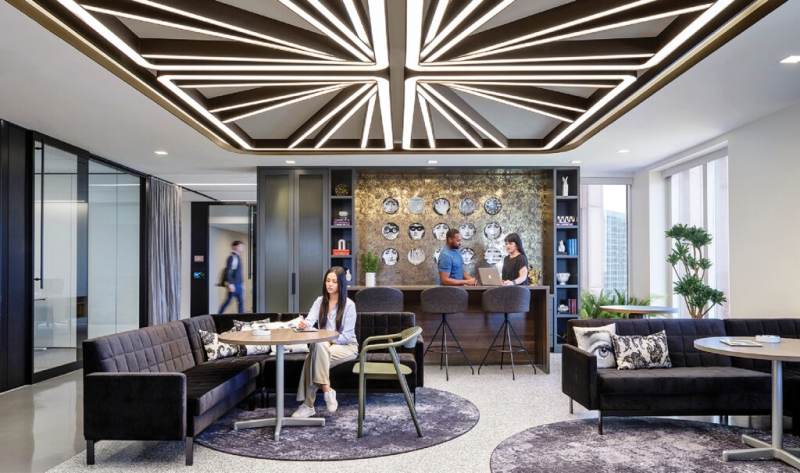
Luxury retailer Neiman Marcus’s 80,000-square-foot, three-story headquarters in Dallas by Gensler was strategically conceived as a remote-hybrid model allowing employees to work wherever they want. Photography by Jason O’Rear.
Warp-Speed Technology
Designers are excited about the productivity that AI and generative AI offer—some are even creating spaces inspired by tech innovation, like this futuristic office in Shanghai by One House Design. AI is deemed a potent tool for marketing, ideation, story-telling, and even helping clientele businesses. Platforms provide ways to pose questions and better perceive clients’ questions, and designers find them particularly valuable when implemented early in the design process. As a result, clients feel the project moves along quicker and communication occurs on a deeper level. That said, clients still require personal connection and trust.
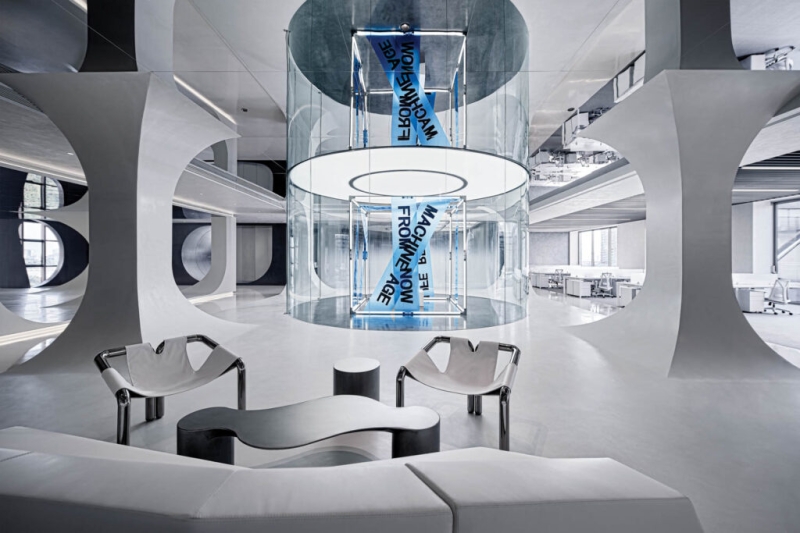
On the banks of Shanghai’s Huangpu River, the new office of financial investment company Shanghai Transaction Succeed combines technological sleekness with artfully abstract interventions, yielding a space that feels plucked from the metaverse. Photography by Qingyan Zhu.
Alternative Views on Higher Education
The four-year college degree as career pathway is no longer set in stone. So-called new-collar jobs, like those rising in tech or construction fields, don’t necessarily require it. Increasingly, trade school enrollment or heading directly for employment are viable alternatives. As for institutions, research found them to be investing in renovation rather than re-build and focusing on amenities for students, such a Penn’s modernized boat house by EwingCole.
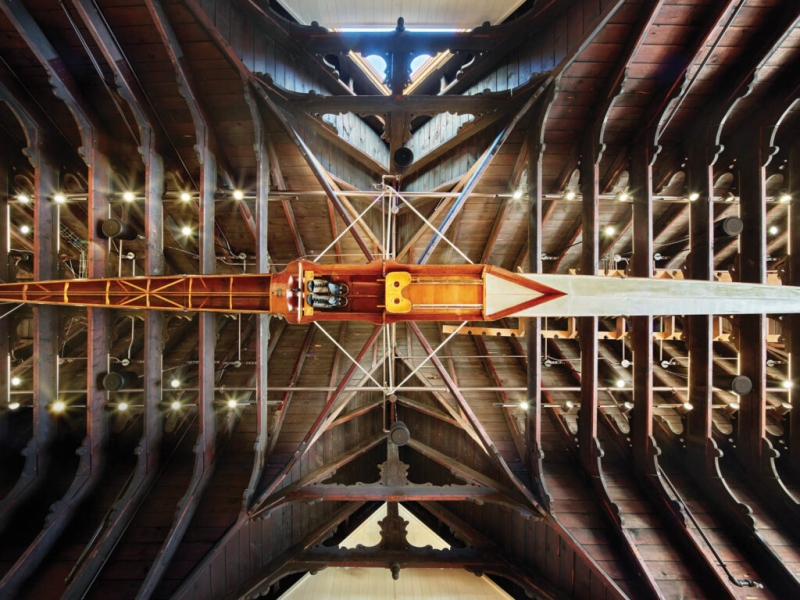
University of Pennsylvania tapped EwingCole to modernize and expand its existing varsity crew facility, located in an 1875 stone boathouse along the Schuylkill River in Philadelphia. Photography by Halkin/Mason Photography.
Designing For Inclusivity And Vast Societal Values
From a call to prioritize neurodiversity and wellness to increased focus on sustainability and toxin awareness, as well as strengthening DE&I initiatives, designers are working to create a brighter future. Take Eliza Redmann, an architect and artist who creates work that sheds light on her invisible disability while making spaces more approachable for those with sensory sensitivities. Given the shifting landscape, the designer’s role, according to ASID executives, “is more crucial than ever in creating purpose-driven, meaningful spaces with an expanded focus on inclusivity, sustainability and personal well-being.” All while incorporating technology, personal narratives, and frankly, joy.
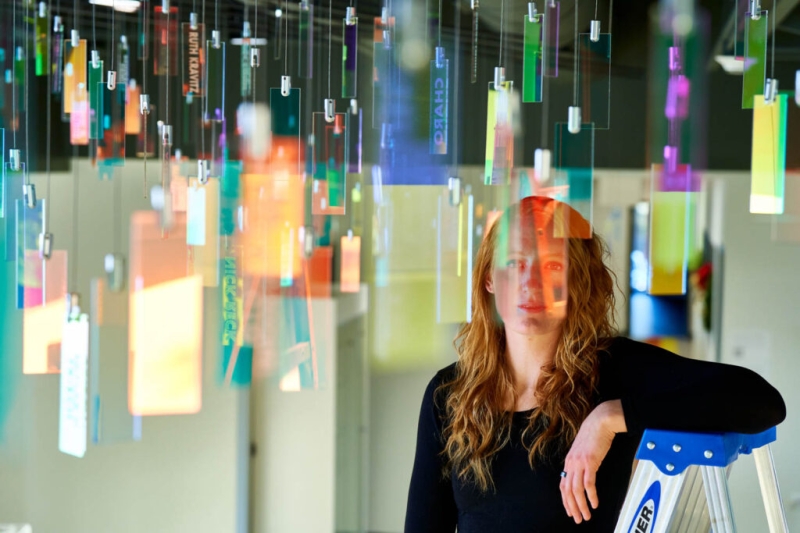
Eliza Redmann surrounded by her artwork Luminary, which is comprised of suspended laser-etched and cut iridescent acrylic. Photography by Matt Ramey.

